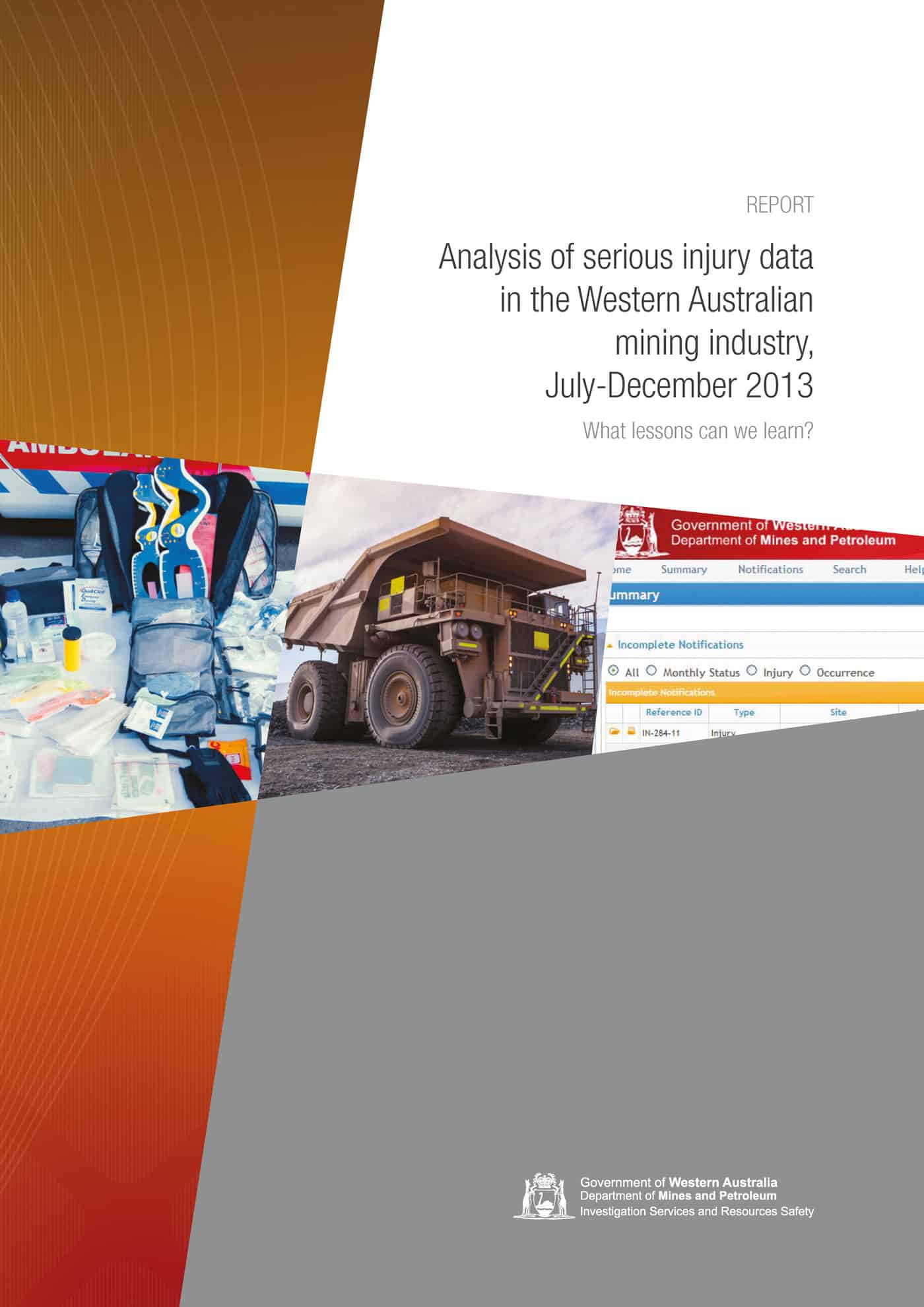 In August 2015, Western Australia’s Department of Mines & Petroleum (DMP) released a statistical analysis that seems to do little more than confirm what is already known. It is important to validate data but the mining sector often promotes itself as leading in occupational health and safety (OHS) but this report seems dull and dated.
In August 2015, Western Australia’s Department of Mines & Petroleum (DMP) released a statistical analysis that seems to do little more than confirm what is already known. It is important to validate data but the mining sector often promotes itself as leading in occupational health and safety (OHS) but this report seems dull and dated.
“Analysis of serious injury data in the Western Australian mining industry July-December 2013 report” recommends these unremarkable “potential areas of improvement”:
- “improved hazard identification and risk assessment
- the development of principal hazard management plans (PHMPs)
- the use of written work procedures for all critical tasks
- supervision and observations to ensure compliance with procedures
- the pro-active involvement of workers in safe work system development
- improved training of workers and supervisors in
procedures and processes- improved site induction and familiarisation in the early months of employment
- adequate breaks during the shift to reduce the potential for human error.” (page 2)
 The report focuses on fatalities data based on “active failures” and “latent conditions” but some of the latent conditions, particularly “hours of work, rosters, fatigue,” are hardly mentioned in the report. This seems extraordinary given the attention given to such latent conditions in the recent report by the West Australian Parliament in to the mental health of fly-in fly-out (FIFO) workers. It may be that DMP saw no need to include the following issues identified in the WA FIFO report but the lack of even an acknowledgement of the FIFO report seems peculiar.
The report focuses on fatalities data based on “active failures” and “latent conditions” but some of the latent conditions, particularly “hours of work, rosters, fatigue,” are hardly mentioned in the report. This seems extraordinary given the attention given to such latent conditions in the recent report by the West Australian Parliament in to the mental health of fly-in fly-out (FIFO) workers. It may be that DMP saw no need to include the following issues identified in the WA FIFO report but the lack of even an acknowledgement of the FIFO report seems peculiar.
The FIFO report recommended a Code of Practice for the sector that should include changes in the following areas:
- “Rosters: encouraging even‐time rosters, and rosters that support mental health and wellbeing such as two weeks on, one week off, or the 8 days on, 6 days off roster. Rosters of greater compression than this can result in fatigue and pose significant risks to workers’ mental health and wellbeing, and should be reduced.;
- Fatigue: including an explicit acknowledgement of the impact of fatigue on mental health;
- Workplace culture: through addressing mental health literacy and stigma;
- Bullying: the development of improved anti‐bullying procedures and greater capacity for DMP to pursue and prosecute bullying claims;
- Acknowledging the impact of FIFO on personal relationships, including financial pressures and employment volatility, and their impact on personal relationships;
- Communication facilities: the Code should emphasise the need for high quality, reliable and accessible communications technology in FIFO accommodation villages, in order to facilitate worker communication with home;
- Accommodation facilities: including recreational facilities and accommodation practices. The use of ‘motelling’ practices should be minimised, and where possible, abolished; and
- The levels of control exercised over workers within accommodation facilities.” (page iv)
Recurrences
The OHS performance of the mining sector can also be questioned from this quote from page 2:
“About 75 to 80 per cent of the fatal accidents involved repeat scenarios with common causation factors.”
One of the most frustrating part of safety management is the recurrence of a hazard. Any recurrence indicates that the control measures chosen after the first occurrence were flawed. A single recurrence may be understandable, showing that the controls need refining but repeated occurrences are indicative of a cultural and attitudinal problem with the company or the sector.
Bird’s Pyramid
The prominence given to Bird’s Accident Triangle or Pyramid (page 21) is of particular concern and is, perhaps, the strongest indicator of outmoded thinking on safety. Many have criticised Bird’s triangle, based on earlier work of Heinrich. In 2010 David G Broadbent wrote that
“…..that for every 30,000 at risk behaviours, you are likely to experience a major incident (other versions put fatality at the pinnacle), and so forth up the Pyramid. Nothing could be further from the truth. It is just a convenient nonsense – seems to make some intuitive sense (and that is what makes it so dangerous) – although there is no real science to support the intuition.
The implication is that there is a direct mathematical relationship between the number of near misses occurring on a site and the likely number of major incidents, LTI’s etc. At the very best, one must say this is misleading. At its worst we have to say that it is very dishonestly pedalled about. The higher up the Pyramid you go, the less valid is any relationship at all.”
Government departments do vary in their approaches to OHS and their understanding of safety but it is disappointing to see such unimaginative and dated approaches to OHS from an Australian government department.
